Top speed 2,470 km/h Cruise speed 2,124 km/h Length 16 m | Range 834 km Wingspan 11 m Engine type General Electric F110 | |
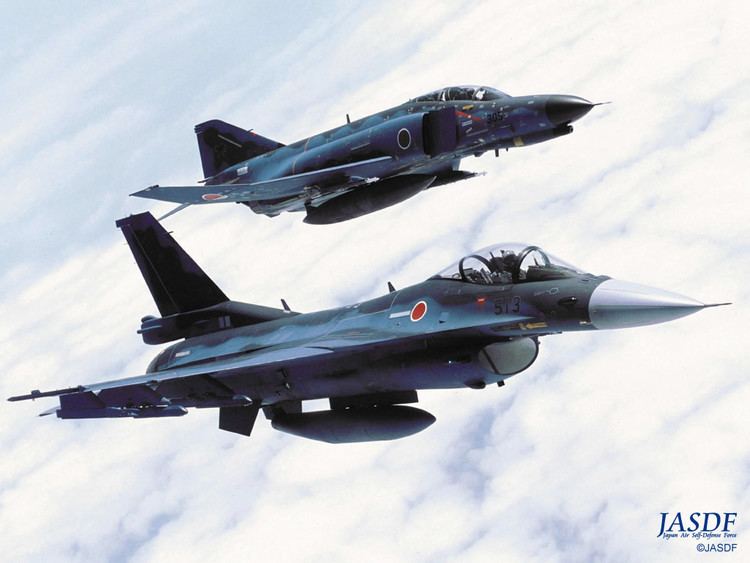 | ||
Unit cost 127,000,000–127,000,000 USD (2009), 12,000,000,000–12,000,000,000 JPY (2009) | ||
The Mitsubishi F-2 is a multirole fighter derived from the General Dynamics F-16 Fighting Falcon, and manufactured by Mitsubishi Heavy Industries and Lockheed Martin for the Japan Air Self-Defense Force, with a 60/40 split in manufacturing between Japan and the United States. Production started in 1996 and the first aircraft entered service in 2000. The first 76 aircraft entered service in 2008, with a total of 94 airframes produced. The first AESA Active electronically scanned array radar on a combat aircraft was the J/APG-1 introduced on the Mitsubishi F-2 in 1995.
Contents
- Mitsubishi f 2 viper zero takeoff
- Development
- Design
- Operational history
- Variants
- Operators
- Accidents and incidents
- Specifications F 2A
- References
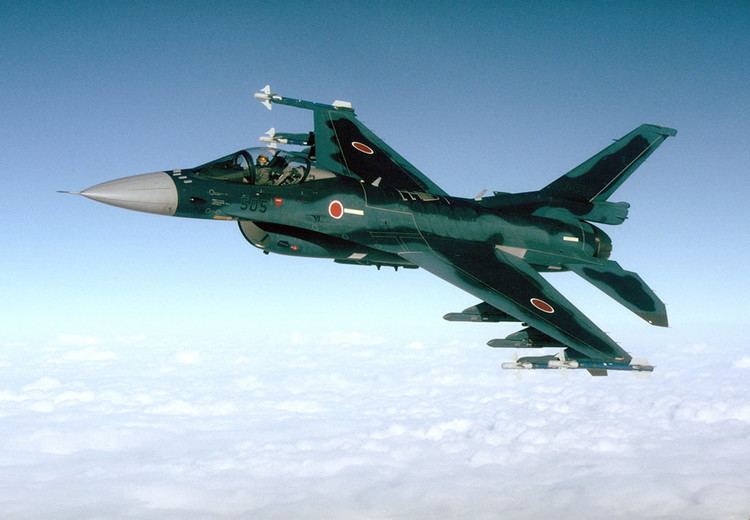
Mitsubishi f 2 viper zero takeoff
Development
Work started in the FS-X program, initially given the company designation Mitsubishi SX-3, and began in earnest with a memorandum of understanding between Japan and the United States. It would lead to a new fighter based on the General Dynamics (post 1993, Lockheed Martin) F-16 Fighting Falcon, and in particular the F-16 Agile Falcon proposal. Lockheed Martin was chosen as the major subcontractor to Mitsubishi Heavy Industries, and the two companies co-developed and co-produced the aircraft. The F-2 used the wing design of the F-16 Agile Falcon, but much of the electronics were further updated to 1990s standards.
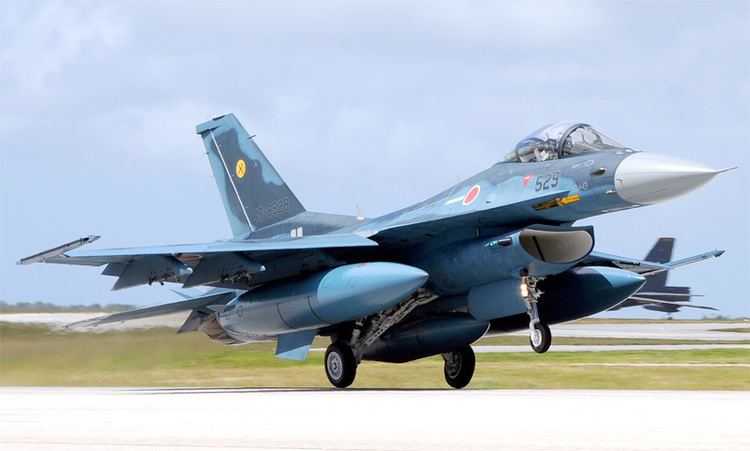
In October 1987, Japan selected the F-16 as the basis of its new secondary fighter, to replace the aging Mitsubishi F-1 and supplement its main air superiority fighter, the F-15J as well as the F-4EJ. The program involved technology transfer from the USA to Japan and vice versa. Responsibility for cost sharing was split 60% by Japan and 40% by USA. Lockheed Martin would manufacture all the aft fuselages and wing leading-edge flaps and eight of the ten left-hand wingboxes.
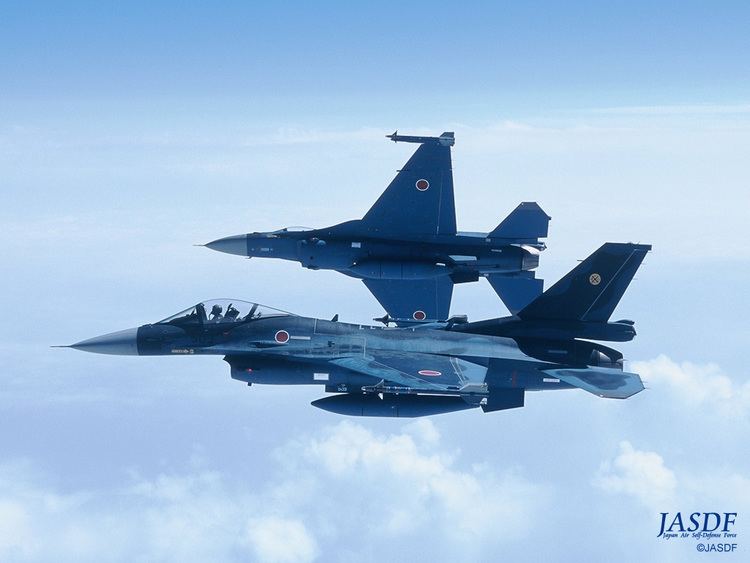
The F-2 program was controversial, because the unit cost, which includes development costs, is roughly four times that of a Block 50/52 F-16, which does not include development costs. Inclusion of development costs distorts the incremental unit cost (this happens with most modern military aircraft), though even at the planned procurement levels, the price per aircraft was somewhat high. The initial plan of 141 F-2s would have reduced the unit cost by up to US$10 million(€7,5 million) per unit, not including reduced cost from mass production. As of 2008, 94 aircraft were planned. Also controversial is the amounts claimed to be paid to American side as various licensing fees, although making use of the pre-existing technology was much cheaper than trying to develop it from scratch.
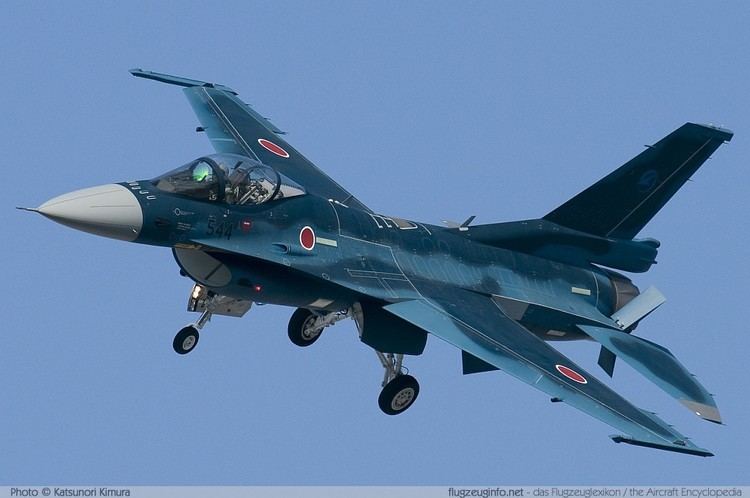
The F-2's maiden flight was on 7 October 1995. Later that year, the Japanese government approved an order for 141 (but that was soon cut to 130), to enter service by 1999; structural problems resulted in service entry being delayed until 2000. Because of issues with cost-efficiency, orders for the aircraft were curtailed to 98 (including four prototypes) in 2004. Flight testing of the four prototypes were conducted by the Japan Defense Agency at Gifu Air Field.
The last of 94 production aircraft ordered under contract was delivered to the Defense Ministry on 27 September 2011. During the roll-out ceremony of the last production F-2 fighter jet, Mitsubishi Heavy Industries confirmed that production of the F-2 would end and no more F-2 fighters will be produced by the manufacturer. As of 2014 there are 61 single-seaters flying, and 21 two-seat trainers.
Design
General Electric, Kawasaki, Honeywell, Raytheon, NEC, Hazeltine, and Kokusai Electric are among the primary component sub-contractors. Lockheed Martin supplies the aft fuselage, leading-edge slats, stores management system, a large portion of wingboxes (as part of two-way technology transfer agreements), and other components. Kawasaki builds the midsection of the fuselage, as well as the doors to the main wheel and the engine, while forward fuselage and wings are built by Mitsubishi. Avionics are supplied by Lockheed Martin, and the digital fly-by-wire system has been jointly developed by Japan Aviation Electric and Honeywell (formerly Allied Signal). Contractors for communication systems and IFF interrogators include Raytheon, NEC, Hazeltine, and Kokusai Electric. Final assembly is done in Japan, by MHI at its Komaki-South facility in Nagoya.
Larger wings give better payload and maneuverability in proportion of its thrust, but also tend to add weight to the airframe in various ways. More weight can have negative effects on acceleration, climbing, payload, and range. To make the larger wings lighter the skin, spars, ribs and cap of the wings were made from graphite-epoxy composite and co-cured in an autoclave. This was the first application of co-cured technology to a production tactical fighter. This technology for the wings encountered some teething problems, but proved to be a leading-edge use of a technology that provides weight savings, improved range, and some stealth benefits. This technology was then transferred back to America, as part of the program’s industrial partnership.
The F-2 has three display screens, including a liquid crystal display from Yokogawa.
Some differences in the F-2 from the F-16A:
Also, the F-2 is equipped with a drogue parachute, like the version of the F-16 used by South Korea, the Netherlands, Norway, Greece, Turkey, Indonesia, Taiwan, and Venezuela.
Operational history
On 7 February 2013, two Russian Air Force Sukhoi Su-27 fighters briefly entered Japanese airspace off Rishiri Island near Hokkaido, flying south over the Sea of Japan before turning back to the north. Four F-2 fighters were scrambled to visually confirm the Russian planes, warning them by radio to leave their airspace. A photo taken by a JASDF pilot of one of the two Su-27s was released by the Japan Ministry of Defense. Russia denied the incursion, saying the jets were making routine flights near the disputed Kuril Islands.
On 22 August 2013, two Russian Tupolev Tu-142 Bear-F maritime patrol aircraft (MPA) entered Japanese airspace near the major southern island of Kyushu for less than 2 minutes. F-2 fighters were scrambled in response.
Variants
Operators
Accidents and incidents
Specifications (F-2A)
Data from Wilson
General characteristics
Performance
Armament
Avionics
